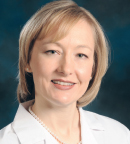Multiple myeloma is a malignant clonal plasma cell malignancy that primarily affects older adults. Although therapeutic advances have led to improvements in disease-specific and overall survival over the past decade, age-related survival disparities continue to exist. The higher prevalence of frailty, comorbid conditions, and decline in physiologic reserve, which in turn impact treatment delivery and tolerance, are believed to account for these survival disparities.1,2

Shakira J. Grant, MBBS

Tanya M. Wildes, MD, MSCI

Sonja Zweegman, MD, PhD
The observed heterogeneity in outcomes for patients with myeloma suggests a clear need to develop strategies capable of identifying a vulnerable group of patients who may benefit from enhanced toxicity risk prediction. Using such an approach, providers could characterize a patient’s fitness (fit, intermediate-fit, and frail), which then would allow for the development of a personalized fitness-based management plan. Such an approach would be capable of addressing the myeloma burden while accounting for aging-related vulnerabilities. Although this approach holds significant promise, there is still a paucity of interventional cancer trials evaluating fitness-based management approaches or studying treatment interventions for vulnerable patients. Prioritizing these approaches in the design of future clinical trials could bridge the existing gap in survival disparities for those with myeloma while ensuring the real-world patient population derives similar efficacy benefits as clinical trial participants.
The Burden of Multiple Myeloma
Globally, approximately 159,985 cases of multiple myeloma are diagnosed annually, with the majority occurring in the United Kingdom and Europe (25%) and the United States (20%).3,4 Of note, the majority of patients are at least 65 years old at the time of their myeloma diagnosis—an age group considered to be one of the fastest-growing in the world. Current estimates suggest the global number of adults aged 65 or older could double between 2020 and 2050, reaching almost 1.6 billion, with nearly 1.1 billion of those 70 years of age or older.5 Assuming a continued upward trajectory in myeloma incidence, the worldwide incidence of myeloma could potentially exceed the 126% global increase observed between 1990 and 2016.4
“Chronologic age alone cannot predict patient fitness, neither should it serve as a surrogate for treatment decision-making.”— Shakira J. Grant, MBBS, Tanya M. Wildes, MD, MSCI, and Sonja Zweegman, MD, PhD
Tweet this quote
Although these numbers appear daunting, they highlight the growing urgency to address the unique challenges of older adults with multiple myeloma. Providers need to recognize that chronologic age alone cannot predict patient fitness, neither should it serve as a surrogate for treatment decision-making. The emphasis needs to be placed on defining physiologic age, which then permits a more personalized management approach geared toward minimizing treatment-related toxicity yet offering disease control.
Unraveling Treatment Challenges in Older Adults
How do we define fitness/frailty? To begin, we must recognize these terms exist on a continuum. There is currently no universally accepted definition of frailty. However, frailty is generally thought to represent age-related decline in physiologic reserve, which makes patients more susceptible to stressors and also places them at high risk for poor health-related outcomes.6
Tremendous efforts have been made to develop myeloma-specific tools capable of assessing frailty/fitness. Such tools have incorporated various components of the multidomain comprehensive geriatric assessment, which is often considered the “gold standard” for assessing the global health status of an older adult.
“For fit patients, the goal of treatment should be therapeutic efficacy aimed at achieving the best disease response.”— Shakira J. Grant, MBBS, Tanya M. Wildes, MD, MSCI, and Sonja Zweegman, MD, PhD
Tweet this quote
The International Myeloma Working Group’s (IMWG) frailty score,7 which measures comorbidities (Charlson Comorbidity Index) and functional status (activities of daily living and instrumental activities of daily living), is one scale capable of predicting toxicity risk and survival. The Revised Myeloma Comorbidity Index (R-MCI)8 is another tool predictive of overall and progression-free survival in patients with multiple myeloma. This additive score, derived from a combination of pulmonary and renal function, age, frailty (Fried phenotype), and performance status (Karnofsky), has been used in both clinical and research settings. Additional predictive and prognostic models have since been developed to account for myeloma stage, biologic markers of aging, function, and comorbid burden.6 Yet the optimal tool for assessing frailty/fitness in this population remains unknown.
To address this unmet need, we require a tool that also incorporates measures such as cognition or objective measures of physical function (eg, gait speed). Then, the tool can be used to risk-stratify patients and aid in clinical decision-making, yet it must be brief enough to facilitate real-world use. We also need prospective clinical trials to test the predictive and prognostic capabilities of myeloma-specific indices, which then position us to address questions on whether fitness-based approaches improve disease and patient-related outcomes. Prospective trials incorporating fitness-based approaches also allow the impact of myeloma therapies on fitness/frailty status to be assessed.
Recent Therapeutic Progress
Although several systemic treatments are now available for older adults with multiple myeloma who are transplant-ineligible, consensus on the preferred front-line therapy for this patient population is still lacking. Major challenges include finding the right balance between therapeutic efficacy and toxicity for vulnerable patients and knowing the appropriate subset of patients most likely to benefit from doublet, triplet, or quadruplet regimens.
“For those considered intermediately fit or frail, we need to consider the burden of myeloma therapies, which is also influenced by treatment intensity and route of administration.”— Shakira J. Grant, MBBS, Tanya M. Wildes, MD, MSCI, and Sonja Zweegman, MD, PhD
Tweet this quote
Currently, the most efficacious regimens based on observed improvements in progression-free survival follow: daratumumab, bortezomib, melphalan, and prednisone (Dara-VMP); daratumumab, lenalidomide, and dexamethasone (Dara-Rd); RVD; and VMP plus thalidomide (T) followed by maintenance VT.9 However, when looking at the benefit-risk ratio, defined as progression-free survival vs side effects, Dara-Rd is the most favorable.9 Even though these front-line therapies may be appropriate for some, extrapolation to less-fit adults should be done cautiously, as fitness-based approaches to therapy assignments were not incorporated in the respective clinical trials.
One phase III trial investigated the efficacy and feasibility of fixed-dose Rd, followed by lenalidomide monotherapy until disease progression, vs continuous Rd in adults 75 years of age and older with newly diagnosed multiple myeloma who have intermediate fitness (IMWG score).10 Initial results suggested fixed-dose Rd (nine 28-day cycles, then lenalidomide maintenance) may have similar efficacy and better tolerability than continuous Rd for this population.
The triplet regimen ixazomib, daratumumab, and dexamethasone may also be an appropriate option for select unfit or frail older adults, based on early efficacy and safety data from the ongoing phase II HOVON 143 trial.11 The results of these and other ongoing prospective studies incorporating frailty scales and geriatric assessments will be critical to our understanding of the influence of fitness-based management strategies on outcomes.
Moving Toward Personalized Fitness-Based Care
Adopting a fitness-based approach to the management of multiple myeloma requires several important disease- and patient-related considerations. First, it is important to recognize how non-cancer–related aging vulnerabilities and concerns could further impact the outcomes of older adults. These factors include cognitive function, psychosocial health, functional status, polypharmacy, and the impact of other competing comorbid conditions on life expectancy. Not only is it important to recognize these aging-related vulnerabilities and concerns, but the emphasis should be placed on optimizing identified deficits to ensure the delivery of high-quality care. Various models exist to address the identified deficits, including referrals to additional allied health professionals such as pharmacists, psychologists, and physical and occupational health specialists. Second, providers need to understand which of the available predictive/prognostic scales, such as the IMWG frailty score or the R-MCI, may be most valuable to guide treatment decisions.
Despite attempts to address these concerns, treating providers are challenged by knowing when and if multiple myeloma therapies should be initiated and for whom a fitness-based approach should be offered. This has led to the development of guidelines based on expert opinions, such as those by the European Myeloma Network, endorsing a fitness-based approach to the treatment of multiple myeloma.12 This approach enables treatment goals to be guided by the patient’s fitness and ensures the best-suited therapy.
For fit patients, the goal of treatment should be therapeutic efficacy aimed at achieving the best disease response. For those considered intermediately fit or frail, we need to consider the burden of myeloma therapies, which is also influenced by treatment intensity (doublet vs triplet) and route of administration (oral, intravenous, and subcutaneous). Additionally, these factors are essential to maintain an acceptable quality of life for frail older adults.
Looking Ahead
The field of multiple myeloma continues to evolve rapidly. However, to ensure providers are prepared to address the aging myeloma population, there is an urgent need for additional studies addressing the intersection of aging biology and disease-related and host characteristics. Ongoing prospective clinical trials incorporating frailty-adapted therapies for older transplant-ineligible adults of various fitness levels will be critical to our understanding of the relationship between fitness/frailty status and treatment and patient-related outcomes.
GUEST EDITOR

Stuart M. Lichtman, MD, FASCO
Geriatrics for the Oncologist is guest edited by Stuart M. Lichtman, MD, FASCO, and developed in collaboration with the International Society of Geriatric Oncology (SIOG). Dr. Lichtman is an Attending Physician at Memorial Sloan Kettering Cancer Center, Commack, New York, and Professor of Medicine at Weill Cornell Medical College, New York. He is also Past President of SIOG. For more information about geriatric oncology, visit www.siog.org and the ASCO Geriatric Oncology website (www.asco.org/practice-guidelines/cancer-care-initiatives/geriatric--oncology/geriatric-oncology-resources).
Until such time, we must continue to assess and incorporate a patient’s physiologic age and disease burden into our decision-making. This may involve the use of various fitness or geriatric assessment scales, which incorporate multiple domains such as function, comorbid burden, and biologic markers. Taken together, this information should be used to develop a personalized fitness-based management plan for vulnerable adults with multiple myeloma.
As the field of geriatric oncology continues to advance, there is a need for a multidisciplinary team approach to foster
collaboration among geriatricians, hematologists, oncologists, and other allied health specialists, with a common goal of consistently delivering high-value, high-quality care to older adults with cancer. Through continued collaborative efforts, the vision of the late Arti Hurria, MD, FASCO, for the continued growth of the field of geriatric oncology could soon be realized: “One day, all older adults with cancer will receive personalized tailored care, utilizing evidence-based medicine with a multidisciplinary approach.”
DISCLOSURE: Dr. Grant is supported by a National Heart Lung and Blood Institute grant (#T32 HL 007093). Dr. Wildes has received research funding from Janssen and has served as a consultant for Seattle Genetics and Carevive Systems Dr. -Zweegman has received research funding from Takeda and Janssen and has served on an advisory board for Janssen, Takeda, Celgene, Oncopeptides, and Sanofi.
REFERENCES
1. Pawlyn C, Gay F, Larocca A, et al: Nuances in the management of older people with multiple myeloma. Curr Hematol Malig Rep 11:241-251, 2016.
2. Pawlyn C, Cairns D, Kaiser M, et al: The relative importance of factors predicting outcome for myeloma patients at different ages: Results from 3894 patients in the Myeloma XI trial. Leukemia 34:604-612, 2020.
3. Siegel RL, Miller KD, Jemal A: Cancer statistics, 2020. CA Cancer J Clin 70:7-30, 2020.
4. Cowan AJ, Allen C, Barac A, et al: Global burden of multiple myeloma: A systematic analysis for the global burden of disease study 2016. JAMA Oncol 4:1221-1227, 2018.
5. United Nations, Department of Economic and Social Affairs: World Population Prospects 2019: Highlights. June 2019. Available at https://population.un.org/wpp/Publications/Files/WPP2019_10KeyFindings.pdf. Accessed August 24, 2020.
6. Cook G, Larocca A, Facon T, et al: Defining the vulnerable patient with myeloma: A frailty position paper of the European Myeloma Network. Leukemia. June 18, 2020 (early release online).
7. Palumbo A, Bringhen S, Mateos MV, et al: Geriatric assessment predicts survival and toxicities in elderly myeloma patients: An International Myeloma Working Group report. Blood 125:2068-2074, 2015.
8. Engelhardt M, Domm AS, Dold SM, et al: A concise revised Myeloma Comorbidity Index as a valid prognostic instrument in a large cohort of 801 multiple myeloma patients. Haematologica 102:910-921, 2017.
9. Giri S, Aryal MR, Yu H, et al: Efficacy and safety of frontline regimens for older transplant-ineligible patients with multiple myeloma: A systematic review and meta-analysis. J Geriatr Oncol. June 5, 2020 (early release online).
10. Larocca A, Salvini M, De Paoli L, et al: Efficacy and feasibility of dose/schedule-adjusted Rd-R vs. continuous Rd in elderly and intermediate-fit newly diagnosed multiple myeloma patients: RV-MM-PI-0752 phase III randomized study. 2018 ASH Annual Meeting & Exposition. Abstract 305.
11. Stege CAM, Nasserinejad K, van der Spek E, et al: Efficacy and tolerability of ixazomib, daratumumab and low dose dexamethasone in unfit and frail newly diagnosed multiple myeloma patients: Results of the interim efficacy analysis of the phase II HOVON 143 study. 2019 ASH Annual Meeting & Exposition. Abstract 695.
12. Larocca A, Dold SM, Zweegman S, et al: Patient-centered practice in elderly myeloma patients: An overview and consensus from the European Myeloma Network. Leukemia 32:1697-1712, 2018.
Dr. Grant is a board-certified geriatrician and senior fellow in the Division of Hematology-Oncology at the University of Washington, Seattle. Dr. Wildes is Associate Professor of Medicine and a geriatric hematologist in the Division of Oncology at Washington University School of Medicine, St. Louis. Dr. Zweegman is Professor of Hematology and Head of the Department of Hematology at the VU University Medical Center, Amsterdam.

